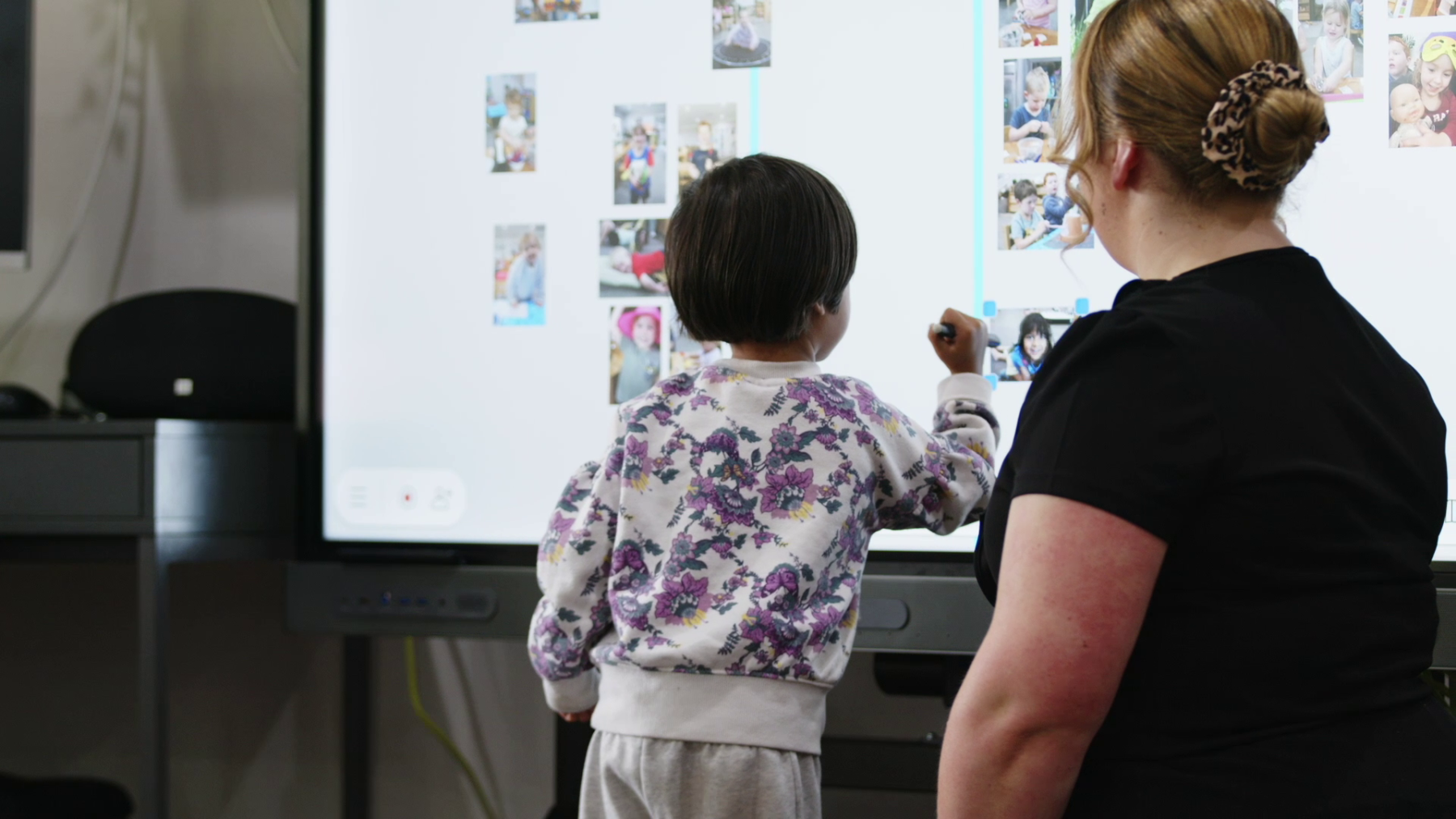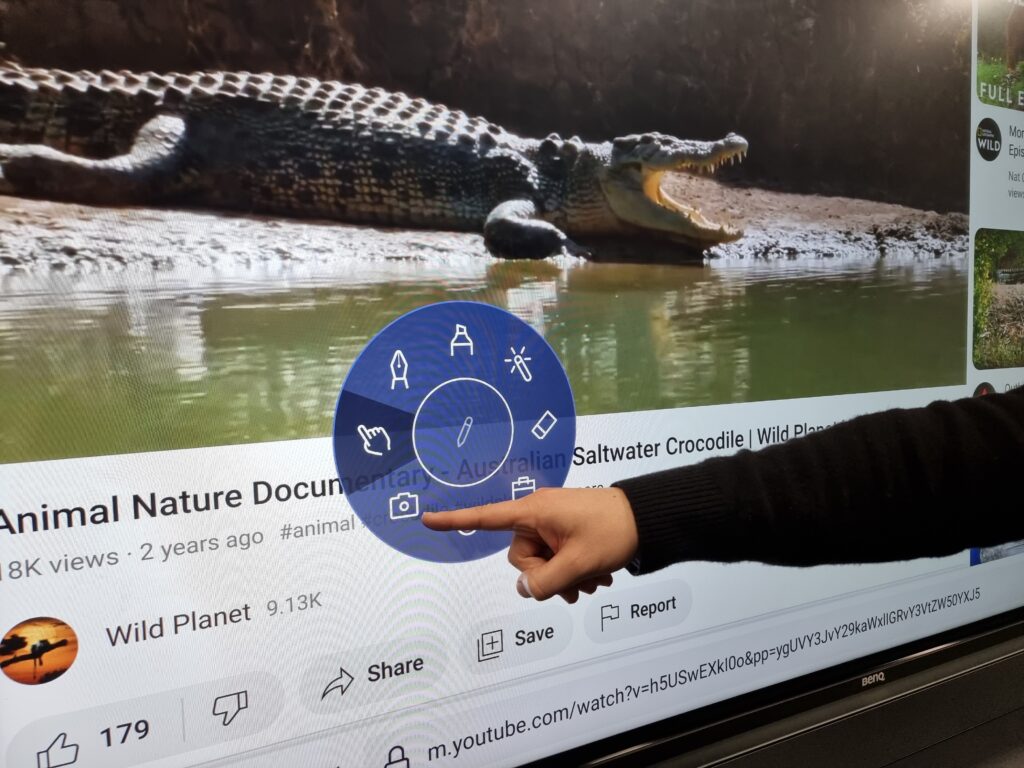Planning and delivery of visual learning experiences simplified by new tech

When it comes to Quality Area 1 of the National Quality Standard (NQS) a key objective is to ensure that the educational program delivered to children is stimulating and engaging and also, importantly, that it enhances children’s learning and development journeys.
Educators quite rightly consider these objectives as being central to their role, and foundational to the children in their classrooms.
Against this backdrop many contemporary early learning services are seeking innovative ways to support their educators to plan and present intentional learning experiences that are relatively straightforward to prepare and deliver.
“Over the last twelve months we have seen a surge in interest from approved providers looking for tools that actively support their teams pedagogical efforts,” Jonathan Lee, Business Manager for Interactive Display ANZ at BenQ said.
“As leaders in the interactive display technologies space we are able to support in three key areas namely; planning, flexibility and engagement which, when taken together, provides educators with a new and dynamic stream of possibilities to bring learning to life.”
Planning for engaging visual learning experiences has never been easier
Effective planning for visual and collaborative learning experiences draws on a number of core skills that all educators use within their classrooms day in and day out.
It requires a keen understanding of the various developmental levels and milestones of the children in their care, knowledge of areas of interest that are ripe for extending and of course a curiosity and willingness to access new learning tools like interactive displays in the classroom.

“Unlike legacy interactive whiteboards, the planning stage when using interactive displays can actually take place on a laptop or the display itself. Even better, a combination of both,” Mr Lee said.
“Educators are able to create reusable templates and other resources that are more like lesson plans which are then dropped into the dashboard of the display for use.”
An example would be planning for a digital safari in the plains of Africa. A template with several windows, engaging colours, a nice title, perhaps even music, with a feed into a YouTube channel could be created in minutes and dropped into the display.
Flexibility of interactive displays supports intentionality in lesson planning
All educators, using their professional experience and capability, understand that to create intentional learning journeys that stimulate and engage children requires a degree of flexibility, and that they, as professionals, must be able to pivot, adjust and adapt.
The whiteboard background files created for learning experiences on BenQ’s interactive panels can be adapted and augmented, redesigned or simply represented using the same PC based system that helped create them in the first place.

“The planning tools inside our EZWrite Whiteboard software are really like giant blank canvases,” Mr Lee said.
“They enable educators to create, recreate, and then create again. It is so simple now to accommodate real intentionality, to quite a fine level of detail, when creating digital experiences on our resources.”
So the template used to create the digital safari could be amended to accommodate a deep sea adventure or a space walking trip. It is this flexibility that is placing next generation digital displays at the forefront of contemporary early learning.
Program delivery both enchants and engages children with fun, play based teamwork
The real power of modern display technologies really comes to the fore when delivering learning experiences to children using the prepared templates and other educator created resources.
“Once the templates and resources are activated in the display the teacher has so many different tools at their disposal to work with the children, particularly from a collaborative perspective,” Mr Lee said.

For example, a YouTube video of a crocodile in a river can be paused and then using the “Floating Toolbar” function embedded in the display the educator can quickly take a screenshot of the croc, invite one of the children to stand up and then drag and drop the image in a pre-created digital whiteboard space titled “crocodiles.”
“It’s fun, educational and engaging all at once. The gasps and wow’s that come from the children as the YouTube videos play and the smiles of satisfaction that come when the image is slotted in the correct box tell us that we are on track with this concept and use-case,” Mr Lee added.
The sentiment is echoed by educators, many of whom embrace all aspects of support, from planning to delivery, that interactive displays can offer.
As Jo O’Brien, founder of New South Wales based Platinum Preschool recently said, “Overall BenQ’s display boards have been a crucial part of our mission. I cannot envisage being able to do what we do without them and are very grateful for the support we have received from them over the years.”
To learn more about BenQ’s unique range of products which are supporting early learning services to engage children and support their educational journey please visit the BenQ Early Childhood Education Solution website.
Popular

Policy
Practice
Provider
Quality
NSW Government launches sweeping reforms to improve safety and transparency in early learning
2025-06-30 10:02:40
by Fiona Alston

Quality
Provider
Policy
Practice
WA approved provider fined $45,000 over bush excursion incident
2025-07-01 07:00:01
by Fiona Alston

Economics
Marketplace
Provider
The new AI powered feature making lives easier for families and service managers
2025-07-01 09:00:59
by Fiona Alston










